APPLIED IMPROVISATION - PART 2/3
Finding Opportunities





Applied improvisation is everywhere!
Last month in part one of the series “An Introduction to Applied Improvisation,” we saw how applied improvisation was involved with every aspect of work and leisure and in every corner of the planet.
In part 2 of the series, let’s look at how to find and keep the clients.
Getting someone who wants to hire you for your skills and expertise can be more difficult than learning those skills in the first place.
How can you convince that high end tech firm or that local sales team at the Hot Tub company to bring you in for a workshop or better yet, develop a relationship to offer a series of classes for years to come?
Use the skills you are selling!
You are creative and resourceful. You and your team need to look seriously (and playfully) at how you will get the work that interests you.
YOU are your first client.
Let’s brainstorm some ideas.



By no means exhaustive, here are some ideas to get you started to find clients to work with.
This is basic on the ground work. If you are a social and engaging person. This might be a great approach for you. It's a difficult approach but it can work.
Figure out the kinds of organizations you want to work with. Pick one and research how they work. Make a plan of where you think your ideas might fit in with their business. Contact the right person (human resources, company owner, etc)and open the conversation. Remember, no one is expecting you. Be polite, friendly, and clear. If you call, Don't call before lunch or at the end of the work day. If you write, keep it short, engaging and personal. If they feel spammed, they aren't likely to engage. Put yourself in their shoes. When would YOU be most receptive to a stranger contacting you about a business offer?
You aren't likely to make a good impression if you sell too hard. Improvise well in your conversation with the people you make contact with. Value their time. Give them a feeling that you are Legitimate, Present that value you can have for them, and BE LOW RISK. (that is: not likely to embarrass the hiring person if they bring you in and won't take up too much of their time or resources.) An incentive offer is always good. Offer to take them to lunch for a quick chat or a session for their employees that will demonstrate what a longer engagement might do. Have promo material and recommendations available.
There are networking organizations around the globe whose aim is to connect groups and people. This might be useful in meeting possible leads that you previously had no access to.
a little heads up. Most of these places are businesses that want to make money. Be prepared to pay. And many of them have an almost cult like feeling with everyone YES ANDING everyone else like cheerleaders on steroids. (Sounds like a lot of Improvisation groups I know)
One of these companies is Business Network International - BNI bills itself as The World's Largest Referral Networking Organization and claims over 30,000 members around the world generating over 22 BILLION dollars of business.
I attended one of their meetings. 25 leaders of assorted businesses gathered together over breakfast to share ideas and promote each other's work. There are some nice enough individuals and the claims they made for their own business earnings seemed exciting on the surface. I was fascinated to see the committed culture they had formed. It might be a good choice for similar types of people with driven commitment to their values and aims.
The Applied Improvisation Network (AIN) is a specific version of Networking Organizations mentioned above. Unlike the general networking resource, this one is specifically geared to improvisers
I've seen little evidence of people getting direct work through AIN (except for speakers at their conferences) but there are great resources that might open doors for you that will guide you in the right direction. (With that said, I ran across a Belgian hiring executive who was exploring the improvisation community and had a massive budget to spend... It didn't work out well because too many of the participants at that conference came across as a bit too risky for the man who said they appeared to belong to a "cult of Yes" which he had no desire to interact with. REMEMBER from the previous section: Don't sell too hard and present yourself as a value, not as a drain on those hiring).
There are some great individuals who will be an asset to your development. You might even find a partner for a project in a field you hadn't originally considered. Like any organization, there are gems and there is 'fool's gold'.
They have moved to a paid membership. Check them out and see if they are worth exploring for where you are at in your development. Their website is here. https://www.appliedimprovisationnetwork.org/
You know people. Your brother in law has a law office. The local librarian and you are friends. Your child's teachers are interested in your work.
These are the places to enter the world of applied impro. You are likely to have been in conversations with these people about how their group works, and where it needs repairs. Offer your services at a special friends and family rate or, exchange your services for promo material (video some of the class, take photos, get testimonials and feed back). You have to start somewhere and this is an ideal place. It's safe, friendly and likely to open up doors to more work in similar areas.
The first thing you can do wrong is to present your ideas without considering WHO you are presenting to.
What you know is irrelevant if you can't take care of your partner - the client- so that they get what they want.
Go online and see what you can find out about their history
Check out their reviews if that's applicable
Talk to employees and administrators. What are their major concerns and praises of the company.
KNOW THEIR VISION AND MISSION STATEMENTS! Most businesses have one or both. These represent who they are and what they strive for.
Knowing these things gives you insight and directions to gear your presentation towards. It also earns you major points when you can bring up facts about them during meetings.
If you are being hired by a bank looking to improve their customer satisfaction by improving their service standards, then look at other banks and see where they are doing better and worse. That knowledge comes in handy when you are discussing approaches to take with your client.
On a side note, it might be useful to look at historical trends in their industry. The historical trend in the Cola industry, for example has fascinating trends of what was created and what was discarded by Coke and Pepsi. A competitor of both went against the pattern returning to a more wild time and made creative gains in their marketing plan and overall company direction (JOLT COLA)
Explore the organisation from the inside. Is it possible for you to take a tour? To spend a day with employees? To be with the people you will work with?
I Had the opportunity to hang out with scientists and explore some of the experiments that they were exploring in the Weisman institute before I taught there. It was valuable to see how their brains worked collectively and the fears they brought around the idea of improvisation. (the idea of improvisation can defeat all of your good intentions. You might have to plan to work around that.)
The more you know, the easier and more effective your work with them will be.




If no one can apply what you are teaching, then it's not useful to those who hired you.
And you know what that means the next time they are looking for help...
(It's time to find another client)
You have great ideas but if the participant in your session can't figure out how this applies to what they do in the office then they aren't gaining any new tools. It will just have been a pleasant afternoon where they laughed a bit and got to escape their day job.
When possible ASK THEM if they can see how the theory applies to their work. Suggest ways that you can see possible overlap and get them to confirm or correct your assumption. That will lead you in a better direction or affirm that you are on the right track. And it will give those who are uncertain a clear idea of how to use the skills you are teaching.
Your information is less important than what the participants are actually understanding.
You have a number of 'scripts' that you use when you teach. (I hope you've been teaching for a while if you are entering the world of Applied Impro.) Those scripts may have worked well for other improvisers who know the jargon and culture of improvisation. They don't always work as well for participants who are sometimes unwilling participants in the boss' experiment to make them more adaptive and sensitive.
You might want to keep the words PERFORMING and ACTING out of your presentation.
You might want to consider how much you rely on the enthusiasm of your students to ensure the success of your exercises.
When creating 'scenarios' for them to use in exercises how closely related to their actual lives can you make it? Telling them to pretend to be polar bears in the arctic is probably going to make them less engaged and more self conscious than putting them in a situation they know with a client they've dealt with.
In the moment, change what you do when you recognize issues. I had a manager tell me she wanted to introduce 'dance' as a way to make her staff more connected and sensitive. When I saw that all but 1 of her 30 person staff were middle aged men, I changed what I wanted to do immediately and was able to take more aggressive attitudes towards dance by starting with sport and competition.
You are improvisers first. Your ideas must be flexible.
TALK WITH THE PARTICIPANTS. Be the student at the beginning of class. Ask them about their day to day situations. Gear the conversation towards what the boss wants you to work on.
You probably have something planned based on what the boss wants but balance that with what the employees have taught you and try to incorporate their needs into the lesson.
Then chat a bit more and see if you are on the right path to impacting their real world situations.
YOU KNOW IT'S BEEN DONE RIGHT WHEN THEY ASK YOU BACK!
One of the most expressed criticisms of Applied Improvisation by business, managers and participants in classes is that it was fun but they have no idea how to bring the 'games' and lessons to the real world.
The responsibility to make this link is shared between you and those in charge. Have the conversation with those who hired you BEFORE the class. "HOW DO WE MAKE THE CHANGE IN BEHAVIOUR STICK?" One time workshops have the impact to create good feelings for a short time but need reinforcement. You need to follow the enthusiastic session with more practice.
If you are at a big organisation, you need to have interaction (classes) with more people. You are attempting a culture shift. That takes time and there will always be resistance. So you need consistancy and you need the will of the leadership and participants.
Luckily, if you have visionary leaders, this will be easily done and keep you working with great groups for a long time. If you don't work with visionary leaders, prove your value and lead .
Check next month's newsletter for detailed exercises to make your Applied Improvisation successful as our 3 part exploration continues.